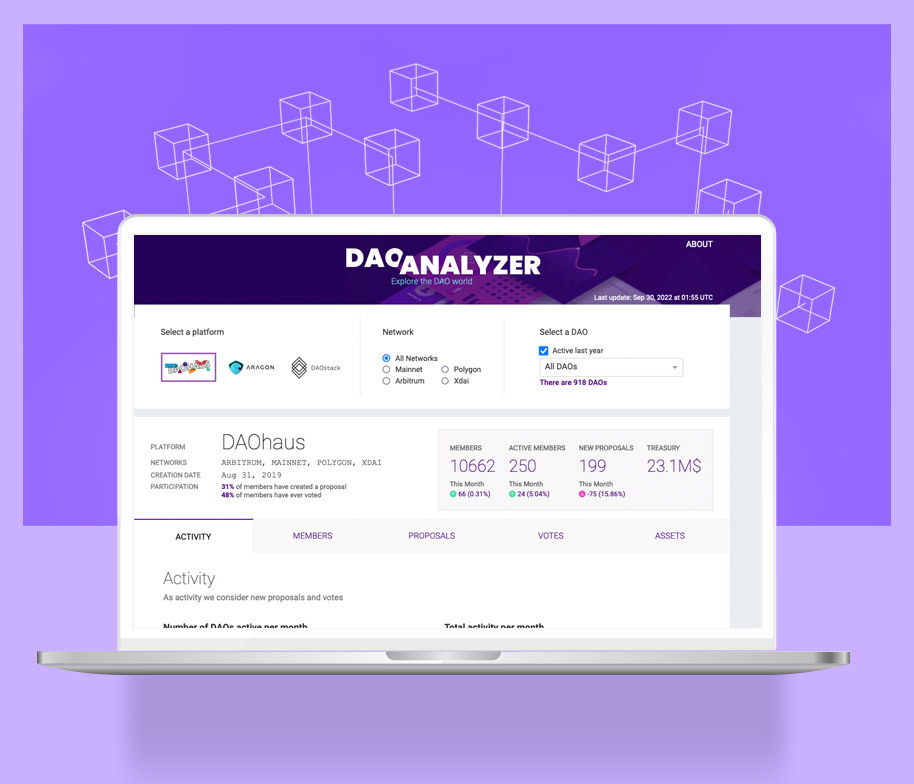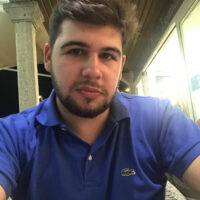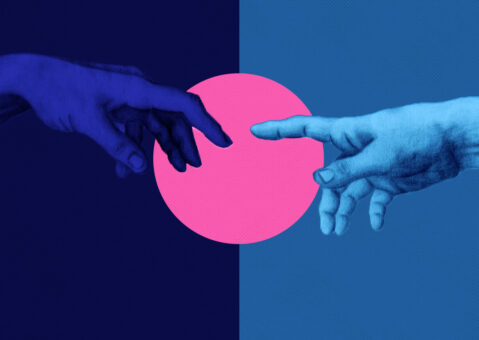In the beginning, blockchain was associated with cryptocurrencies such as bitcoin, but the technology has spread beyond the economic sector and enabled a new type of distributed system. In particular, it has allowed the emergence of new governance and coordination methods, such as the Decentralized Autonomous Organizations, which implement decision-making systems to enable a community to vote for proposals.
Our researchers Youssef Faqir-Rhazoui, Javier Arroyo, and Samer Hassan, in the article A comparative analysis of the platforms for decentralized autonomous organizations in the Ethereum blockchain have analyzed the three current leading platforms (Aragon, DAOstack, and DAOhaus), which facilitate the creation and management of DAOs, with community interactions mediated by blockchain.
What you need to know about Blockchain and DAOs
Distributed ledgers, like the blockchain, are append-only databases with synchronization features. Since a public blockchain is an open infrastructure, which does not belong to nor is it controlled by one central authority, the transactions and operations are considered transparent, since they can be tracked and seen by any participant. In addition to bitcoin, the most relevant implementation of blockchain technology is Ethereum, a transparent decentralized computing platform that allows the software to run in a decentralized manner and its transactions to be transparent, immutable, and a programming language. Solidity, which enables users to program smart contracts, which are programs stored and run in the Ethereum blockchain, and decentralized apps (Dapps).
In recent years, blockchain and smart contracts have enabled new forms of decentralized governance, such as DAOs. DAOs are mainly developed as a free and open-source technology, which is seeing accelerating development. In addition, some platforms provide DAO deployment as-a-service enabling users to easily create and operate their own DAO. As a result, DAOs can now be used to create and manage decentralized organizations, such as companies, cooperatives, nonprofit organizations, or open-source projects.
DAOs powered by a platform
The main platforms that provide DAO deployment as-a-service are Aragon, DAOstack, and DAOhaus. All are free/open-source projects at different stages of development. We will briefly review them below (using data retrieved in November 2020).
Aragon has 1700 DAOs managing $900M, making it the largest DAO platform in the world. Aragon allows users to use “apps” to customize their DAO. The purpose of apps includes allocating the DAO’s funds using the Finance app, an Agent app to interact with other Ethereum smart contracts, a Token app to manage membership, or a Vote app, on which the article is focused. There are other ways to change the decision-making processes in Aragon, changing not just the voting app, but how the organization works.
DAOstack is a platform that aims to tackle the governance scalability problem. According to DAOstack, the larger a DAO, the harder it is to manage, which mimics the classical issues of governance in groups. The higher the number of members, the higher the number of proposals, and consequently the more proposals need to be reviewed by each member to make decisions. A naive solution to this matter could be to reduce the required quorum, but this introduces new flaws. To face this problem, DAOstack proposes the Holographic Consensus (HC) decision-making system: DAO members send and vote for proposals, which pass by an absolute majority (51%). However, there is an alternative method for passing proposals. The idea is to use a prediction market as a middle layer: people may bet on whether a certain proposal will pass or not, staking a certain amount of their tokens (cryptocurrencies) and being rewarded if they are correct. Such mechanisms are intended to act as a filter for the community, mainly focusing on the proposals that attract attention from the stakeholders.
DAOhaus is a platform that enables the creation of DAOs replicating the software used by Moloch DAO, a grassroots solution to the problems of coordination when funding Ethereum 2. DAOhaus DAOs implement a straightforward voting system, a non-quorum system, where a relative majority is always enough to approve a proposal. This simplifies the development and testing processes of their voting system. A key aspect is the “rage quit” mechanism which makes it possible to exit a DAO with your portion of the DAO resources if you do not agree with the result of the voting. This voting system has two main attributes to consider: shares (amount of resources that each DAO member has) and tributes (amount of shares the proposal applicant pays to the DAO). Thus, in a proposal, the applicant can request shares and/or pay a tribute, which helps to define the kind of proposal.
Quantitative comparison of the three main DAO platforms
Data Collection
Data from both the main Ethereum network (mainnet) and a parallel Ethereum-compatible network (xDai) have been retrieved. Analysis reviews data from 72,320 users and 2,353 DAO communities to study the three ecosystems across four dimensions: growth, activity, voting system, and funds.
Our analysis used two DAO visualization tools: DAO-Analyzer, for measuring adoption and activity metrics, and DeepDAO, for fund data. We analyzed the three major DAO platforms (Aragon, DAOstack, and DAOhaus) from the start of each platform’s activity through November 30, 2020.

Growth over time
Since DAOs are a relatively new field relying on a novel technology, early adopters are crucial to future mainstream adoption. If we observe the growth of an online community over time, we can determine whether it is healthy or stalled. To compare the growth rates of the platforms over time, two metrics were used: the number of DAOs and the number of users. However, DAO data was not available for DAOstack and user data was not available for Aragon.
Beyond some exceptional increases, these metrics reveal steady and constant growth. According to them, Aragon seems to be the most popular platform in terms of the number of DAOs.
Activity over time
Although growth is highly relevant, it does not typically provide the full picture. Similarly, to other online communities or online platforms, it is different to mention the number of users vs the number of active users. Therefore, in this context, we must differentiate between DAOs and active DAOs, or users and active users (we will consider them active in a given month if they were active at least once in that month). The data show that Aragon has the highest number of active DAOs, between 60 and 130 per month since March 2019. DAOhaus follows an increasing trend that has also benefited from the xDai network, greatly increasing its active DAOs to around 40 per month. Finally, the number of active DAOs in DAOstack is much more modest, less than 10. When studying activity in terms of active users we can see again that Aragon has a substantially higher number than the other two platforms.
Voting system
One of the most critical features of DAOs is their ability to enable new governance models. All three platforms enable governance through proposals that are voted by DAO members, but each has its particular voting system.
The data for the voting statistics were retrieved from both the mainnet and xDai networks. It shows that in DAOstack and Aragon the percentage of users that vote is less than 10%, while in DAOhaus it is close to 40%. In the case of DAOstack, the inactivity of a DAO (with around 4,000 users) may be the cause of this low percentage, whereas in the case of Aragon the cause might be a high number of inactive DAOs.
All platforms have high percentages of proposals accepted. However, there are still differences in the percentages across platforms. DAOstack has the lowest value (around 75%), followed by Aragon (81%), and DAOhaus (around 90%). Such differences may be due to different voting systems.
Funds owned by DAOs
It is essential to study the funds managed by each DAO because of the importance of crypto assets within the blockchain ecosystem. DAOs enable the collective management of funds through transparent open accounting.
Interestingly, among the top 10 cryptocurrencies by the number of DAOs that use them, many are stablecoins, which are supposed to maintain a stable value.
Looking at the top 10 DAOs with more crypto funds in USD we can find that most of those DAOs belong to the Aragon ecosystem. Surprisingly, most of them have only a handful of registered members (less than 10).
Conclusion
The study shows some remarkable differences among the DAO platforms concerning growth, activity, and voting results. The results of the quantitative analysis show that Aragon is the largest and most active platform. Yet, the difference with the other platforms is significantly less than what a superficial exploration may indicate. Still, we conclude that our work is only a first step, and to have a better understanding of these communities, further research is needed along with an evaluation of the level of accomplishment in reaching decentralized governance in DAOs.
We also advise taking the data from the retrieved statistics with caution. These are general statistics (counts, rates, and general trends) without looking into the individual communities, and because of the relatively small number of DAOs and their diversity, the information may be misleading in some cases. Also, with the study we reflect on the activity of the first adopters interacting with new technology and, in some cases, some of them may have already stopped using the technology, or are only using it to test its capabilities. The phenomenon still needs to be explored in detail both quantitatively and qualitatively.
DAOs are not an easy field to research. Their voting systems and how they are affected by features such as accumulated funds and reputation would be the next important area to look into.
AUTHOR

Antonio De La Iglesia
Communication
[icon name=”linkedin” class=”” unprefixed_class=””][icon name=”globe” class=”” unprefixed_class=””]
Authorship is by Antonio De La Iglesia, but this content has been made thanks to the whole P2P Models team ![]()
Design by Elena Martinez
Copy editing by Tabitha Whittall
Samer Hassan and Genoveva López make everything possible
You may also like
I am text block. Click edit button to change this text. Lorem ipsum dolor sit amet, consectetur adipiscing elit. Ut elit tellus, luctus nec ullamcorper mattis, pulvinar dapibus leo.





